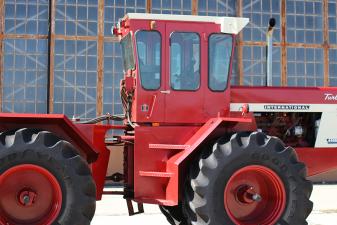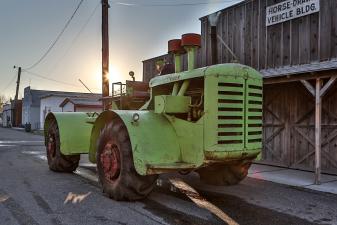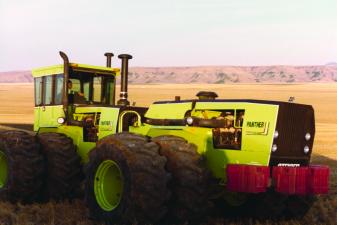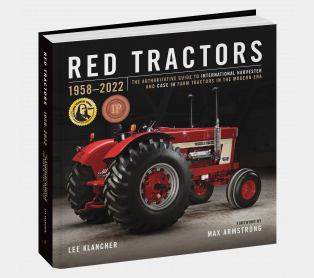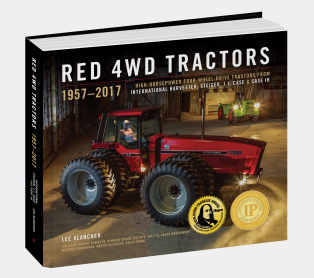The College Kid and the Welding Wunderkinds

This article was originally published as a feature in the Ageless Iron section of Successful Farming magazine, where Lee Klancher is a regular contributor.
Driving back from taking my dog to the park this morning, soaking in the pleasure of cruising sunrise-lit streets, I was reminded how much I love being behind the wheel. I also was struck by the fact that I have no idea when I first drove a motor vehicle.
I can remember the first vehicle I loved driving: it was a bright orange Moto-Ski snowmobile my dad borrowed in the winter of 1973. I became obsessed with the machine and spent several weeks blasting across the fields and exploring local trails, burning all the gas Dad was willing to buy.
Looking back, I believe that Moto-Ski was the catalyst that sparked my fascination with powered machinery.
I also realized I was six years old at the time.
Opportunity for youth is relatively unsurprising in 1970s rural Wisconsin—most of my six- and seven-year-old neighbors were operating equipment.
Opportunity for youth is one of the founding policies of Steiger, and perhaps the fact that the company roots are in northern Minnesota, an area not far from where I grew up geographically and a parallel universe in the philosophy that kids too small to toss hay bales or shovel feed could certainly run heavy equipment.
While I was burning gas and adrenaline in the fields, the Steiger family was burning midnight oil to transform their company from a welder in a barn to become the maker of the “Cadillac of four-wheel-drive tractors.” The accomplishment is nothing short of miraculous, and Douglas Steiger and his company had accomplished this with a mix of innovation, grit, luck, and a healthy dose of letting young, smart folks take the ball and run.
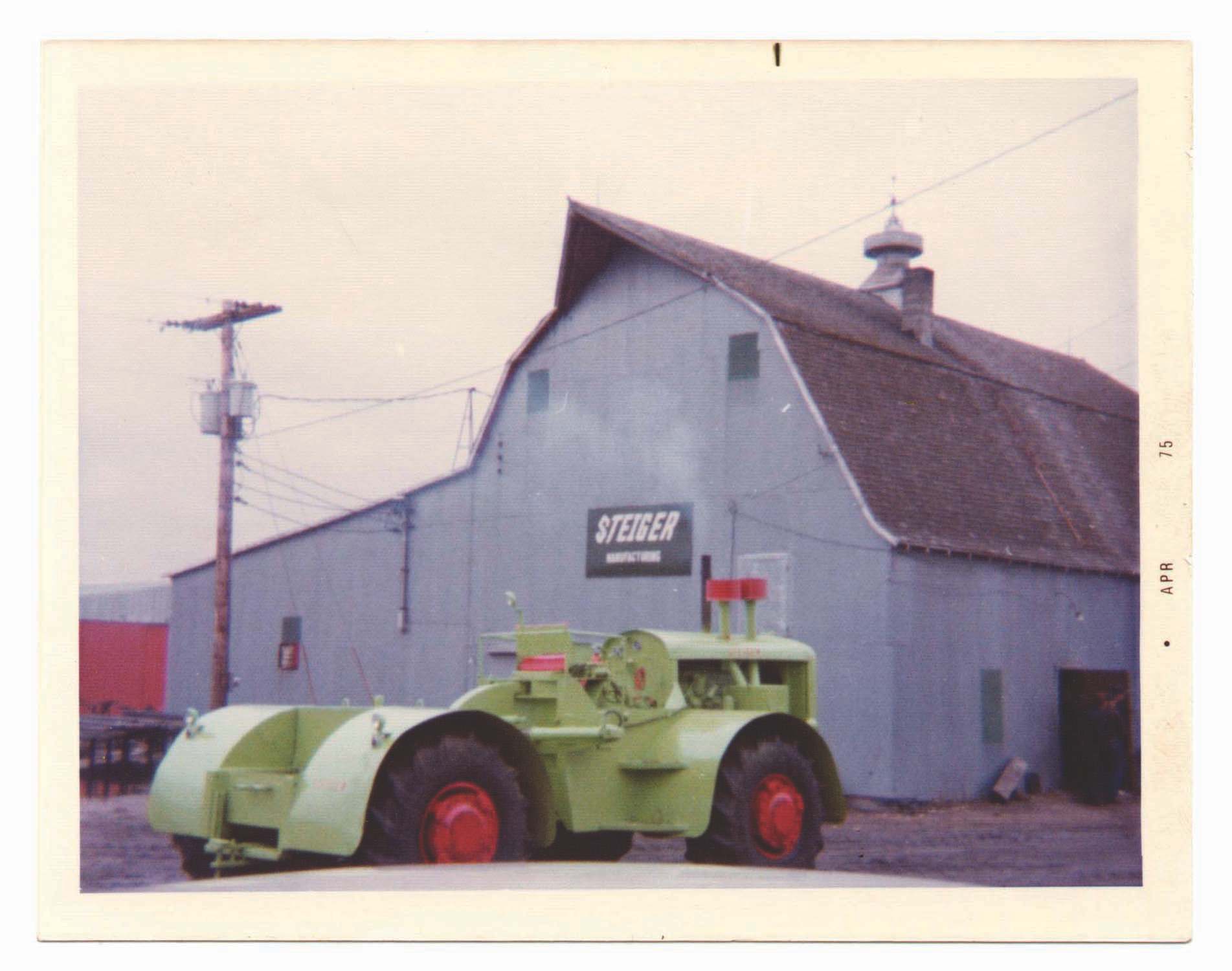
Steiger tractors were first built in the winter of 1958 in this dairy barn near St. Hilaire, Minnesota, by Douglass and Maurice Steiger. Their father, John, also worked on the tractor. This is the first machine they built, shown after it was restored in April 1975. Photo courtesy of Steiger Family Collection
By the early 1970s, Steiger had gained as many yards as they could with grit and youth—the company required an influx of cash to continue their forward progress.
One of the ways the company kept the boat afloat was contract-building machines for other companies, notably Allis-Chalmers and Ford. Steiger president Gene Dahl found the cash influx they needed by striking a similar deal with industry giant International Harvester.
The five-year multi-million-dollar deal to build four-wheel-drive 4366 tractors for IH gave Steiger the funds to build a brand-new factory in Fargo. The timing couldn’t have been better, as the demand for high-horsepower four-wheel-drive tractors exploded through most of the 1970s. Steiger’s new facility allowed them to meet that demand, and the company grew explosively during this time.
Dahl’s deal at a critical time leveraged Steiger into a position of one of the industry leaders, and the new model that emerged would be put together by three men: a wunderkind, a metal-working genius, and a seasoned veteran.
The new 4366 used a Steiger chassis with an International engine, axles, and a few other parts. Creating the machine was done quickly and in complete secrecy. Steiger paired their young wunderkind engineer, Paul Nystuen (who was still in college), with two longtime Steiger fabrication wizards, Jerry Joubert and Al Lieberg, and locked the three of them into a dingy building in Fargo to get the job done.
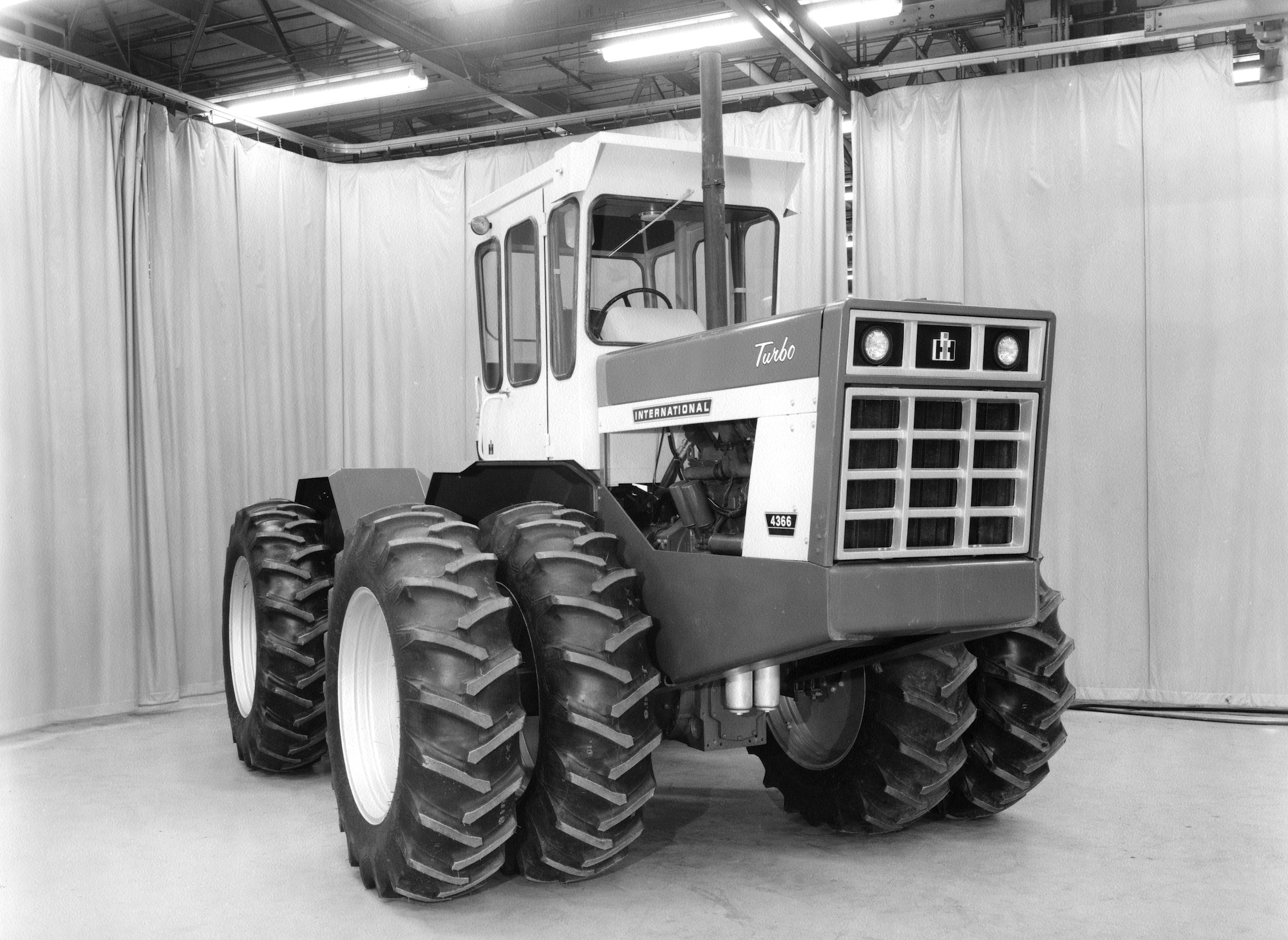
The Steiger-built 4366 photographed in January 1973. The contract with Harvester to build this tractor was one of the most important deals in Steiger history, providing the growing company much needed capital and guaranteed sales. Photo courtesty of Paul Nystuen Collection
“We got on a secret project,” Nystuen said. “It was myself, Jerry Joubert, and Al Lieberg. Jerry and Al were both experimental shop personnel, could do everything: cut, weld, you name it. I was the engineer. We were set up in a building very close to the Steiger plant, and we were isolated. Nobody else was supposed to get in there, and I ended up drawing up a frame structure for the International 4366.”
Harvester specified an IH axle and wheels as well as a paint scheme, graphics, and the hood design. “I did all the details,” Nystuen said. “Then Al and Jerry Joubert . . . built the thing and we were set up in this shop behind the main plant.”
One of the details Nystuen recalled best was a mistake he made in his drawings. When the first rough prototype was complete, Nystuen had made a mistake and the fender on the front was two inches higher than the fender on the rear.
He told his boss, Gordon Irwin, about the error, who handled the issue with aplomb. "You know, we’ll just cut that bottom edge off of the back panel, and you make it symmetrical,” Nystuen recalled Irwin responding. “It’d look fine.”
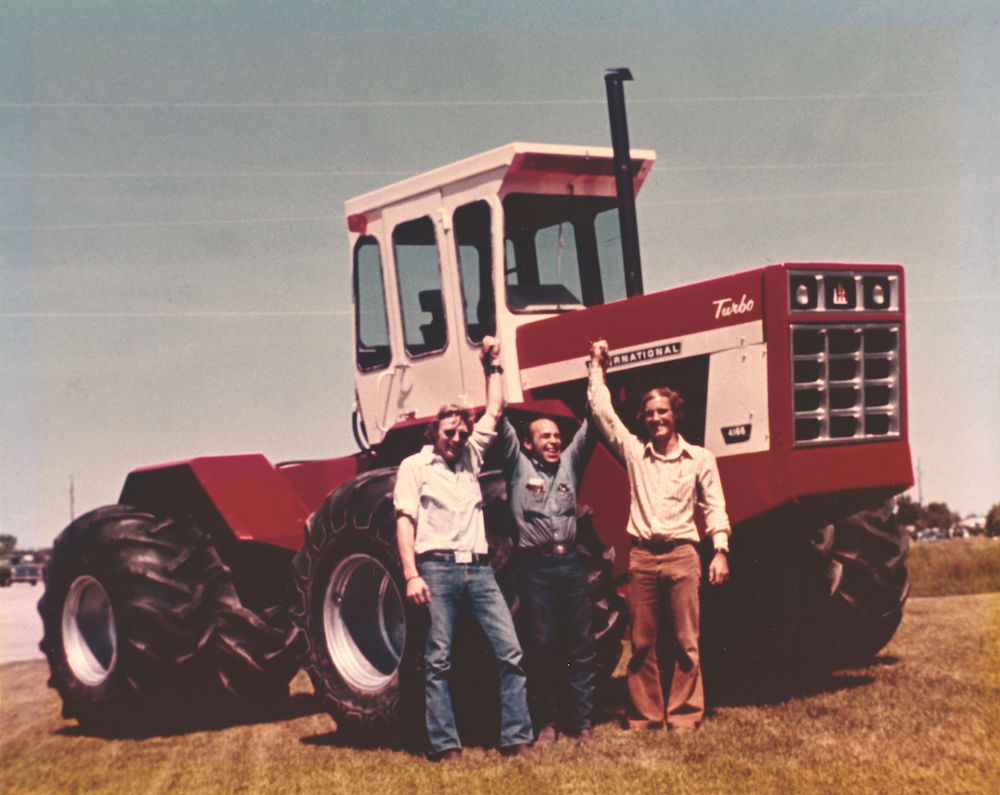
In a secret garage in Fargo, young engineer Paul Nystuen worked with veteran builders Jerry Joubert and Al Lieberg to design and assemble a four-wheel-drive tractor for International Harvester. Photo courtesty of Paul Nystuen Collection
They did just that, and the result is the 4366 has one cropped fender. The 4366 was built with a lot of handwork, and Nystuen recalled that the finish work of the first prototype was done with a lot of grinding and cutting.
The prototype was presented to International Harvester. Former IH engineer Rich Hale remembers seeing that machine when it arrived and finding it a little rough around the edges but soundly engineered. The ruggedly built 4366 had a variety of early issues—all with the International components, particularly the engine—but those were sorted out in the first few years of production and the machine became a solid addition to the IH line.
The great part of the story? This machine enabled an independent company to build their brand, was the first truly successful IH four-wheel drive, and was created in a small garage by a college student genius and two brilliant metal fabricators.
The story of four-wheel-drive machines built by International Harvester, Steiger, and J. I. Case can be found in Red 4WD Tractors by Lee Klancher


